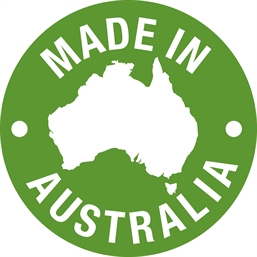
Posted on 07/24/2015 6:56:41 AM PDT by Red Badger
The new genetic analysis takes aim at the theory that just one founding group settled the Americas ===========================================================================================================

Brazil's Surui people, like the man pictured above, share ancestry with indigenous Australians, new evidence suggests. (PAULO WHITAKER/Reuters/Corbis)
====================================================================================================================
More than 15,000 years ago, humans began crossing a land bridge called Beringia that connected their native home in Eurasia to modern-day Alaska. Who knows what the journey entailed or what motivated them to leave, but once they arrived, they spread southward across the Americas.
The prevailing theory is that the first Americans arrived in a single wave, and all Native American populations today descend from this one group of adventurous founders. But now there’s a kink in that theory. The latest genetic analyses back up skeletal studies suggesting that some groups in the Amazon share a common ancestor with indigenous Australians and New Guineans. The find hints at the possibility that not one but two groups migrated across these continents to give rise to the first Americans.
“Our results suggest this working model that we had is not correct. There’s another early population that founded modern Native American populations,” says study coauthor David Reich, a geneticist at Harvard University.
The origin of the first Americans has been hotly debated for decades, and the questions of how many migratory groups crossed the land bridge, as well as how people dispersed after the crossing, continue to spark controversy. In 2008, a team studying DNA from 10,800-year-old poop concluded that a group of ancient humans in Oregon has ancestral ties to modern Native Americans. And in 2014, genetic analysis linked a 12,000-year-old skeleton found in an underwater cave in Mexico to modern Native Americans.
Genetic studies have since connected both these ancient and modern humans to ancestral populations in Eurasia, adding to the case that a single migratory surge produced the first human settlers in the Americas. Aleutian Islanders are a notable exception. They descend from a smaller second influx of Eurasians 6,000 years ago that bear a stronger resemblance to modern populations, and some Canadian tribes have been linked to a third wave.
Reich’s group had also previously found genetic evidence for a single founding migration. But while sifting through genomes from cultures in Central and South America, Pontus Skoglund, a researcher in Reich’s lab, noticed that the Suruí and Karitiana people of the Amazon had stronger ties to indigenous groups in Australasia—Australians, New Guineans and Andaman Islanders—than to Eurasians.
Other analyses haven’t looked at Amazonian populations in depth, and genetic samples are hard to come by. So the Harvard lab teamed up with researchers in Brazil to collect more samples from Amazonian groups to investigate the matter. Together they scrutinized the genomes of 30 Native American groups in Central and South America. Using four statistical strategies, they compared the genomes to each other and to those of 197 populations from around the world. The signal persisted. Three Amazonian groups—Suruí, Karitiana and Xavante—all had more in common with Australasians than any group in Siberia.
====================================================================================================

Researchers mapped similarities in genes, mutations and random pieces of DNA of Central and South American tribes with other groups. Warmer colors indicate the strongest affinities. (Pontus Skoglund, Harvard Medical School)
=================================================================================================================
The DNA that links these groups had to come from somewhere. Because the groups have about as much in common with Australians as they do with New Guineans, the researchers think that they all share a common ancestor that lived tens of thousands of years ago in Asia but that doesn’t otherwise persist today. One branch of this family tree moved north to Siberia, while the other spread south to New Guinea and Australia. The northern branch likely migrated across the land bridge in a separate surge from the Eurasian founders. The researchers have dubbed this hypothetical second group “Population y” for ypykuéra, or “ancestor” in Tupi, a language spoken by the Suruí and Karitiana.
When exactly Population y arrived in the Americans remains unclear—before, after or simultaneously with the first wave of Eurasians are all possibilities. Reich and his colleagues suspect the line is fairly old, and at some point along the way, Population y probably mixed with the lineage of Eurasian settlers. Amazonian tribes remain isolated from many other South American groups, so that’s probably why the signal remains strong in their DNA.
The results line up with studies of ancient skulls unearthed in Brazil and Colombia that bear stronger resemblance to those of Australasians than the skulls of other Native Americans. Based on the skeletal remains, some anthropologists had previously pointed to more than one founding group, but others had brushed off the similarities as a byproduct of these groups living and working in similar environments. Bones can only be measured and interpreted so many ways, while genes usually make a more concrete case.
“The problem so far was that there has never been strong genetic evidence to support this notion,” says Mark Hubbe, an anthropologist at Ohio State University who was not affiliated with the latest study.
But even genetic evidence is subject to skepticism and scrutiny. Cecil Lewis Jr., an anthropological geneticist at the University of Oklahoma, cautions that Amazonian groups are low on genetic diversity and are more susceptible to genetic drift. “This raises very serious questions about the role of chance … in creating this Australasian affinity,” he says.
Another group led by Eske Willerslev and Maanasa Raghavan at the University if Copenhagen reports in Science today that Native Americans descend from just one line that crossed the land bridge no earlier than 23,000 years ago. While they didn’t look at Amazonian groups in-depth, the team did find a weak link between Australasians and some South American populations, which they chalk up to gene flow from Eskimos.
There’s just one problem: Evidence of Population y doesn’t persist in modern Eurasian groups, nor does it seem to show up in other Native Americans. If Aleutian Islanders or their ancestors had somehow mixed with an Australasian group up north or made their way south to the Amazon, they'd leave genetic clues along the way. “It’s not a clear alternative,” argues Reich.
Both studies therefore suggest that the ancestry of the first Americans is a lot more complicated than scientists had envisioned. “There is a greater diversity of Native American founding populations than previously thought,” says Skoglund. “And these founding populations connect indigenous groups in far apart places of the world.”
PinGGG!..........................
Missing links...
It works on my computer...................
Links in the biological/evolutionary sense.
Seems to me I have heard and read about that before.
“Adam was the first man ever invented
Lived all alone and wasn’t contented
So God took a rib and made him a mate.”
“Who knows what the journey entailed or what motivated them to leave...”
Confiscatory taxes and religious oppression.
“A DNA Search for the First Americans Links Amazon Groups to Indigenous Australians”
Correction: They were not Americans, since America did not exist at that time. Americans are the group Obama wants to erase from history.
We could ask half the people who’ve moved to New York City in the past year, and they’d just look at you in a daze....they can’t think of any logical reason....they just did it.

Then the powers that be will have to rename North, South and Central America to something else..........................
Wait just a darned minute. I use Amazon to buy stuff but I never made this connection.
This kinda knocks out the ‘Bering Land Bridge Theory’...................

I use Amazon to buy stuff
Did any of it have this on it?......................
All roads lead to Rome....kinda fits into this discussion.
If you dig around on Egyptian episodes....about a decade ago....someone wanted to figure what the magical ingredients were for doing the four-star mummy deals. So, they did a chemical analysis of some material given to them from a curator....from a collection.
They came back and noted there’s this odd preservative in the mix...tobacco. There’s only one place that you get tobacco from, and it’s not till the 1500s that it gets brought out of the New World to Africa and Europe. Well....that means that the Egyptians were onto some travel and trade route three thousand years ago....to the New World. That got the Egyptians all upset and they quickly played down this bogus examination....it doesn’t fit their story line.
Tobacco was known in South American native cultures as well as North American Indian tribes.
It is quite possible that the Egyptians had colonies of exiles in South America that traded with the home country. The distance across the Atlantic from the coasts of South America to Africa is relatively short.....................
3,109 km / 1932 Miles = Distance from Recife, Brazil to Monrovia, Liberia.................
Our founders insisted on applying the identifier “American” to citizens of the United States exclusively. They wrote about it and it has been the case historically. In our school district, after Jindal shifted the state over to Common Core, one of the first MANDATED changes made in the curriculum was to change the course named “American history” to “United States history”. The intent is, of course, to have American kids to lose that identifier, since that has historically stood for Americans, and for individual liberty. But if you want to be broadminded and water down and give away your historical birthright, have at it.
Genetic “choke point” => a guy named Noah.
Duh.
Mixed up languages.
It’s all there, if they’d just accept that it’s all there...
Disclaimer: Opinions posted on Free Republic are those of the individual posters and do not necessarily represent the opinion of Free Republic or its management. All materials posted herein are protected by copyright law and the exemption for fair use of copyrighted works.